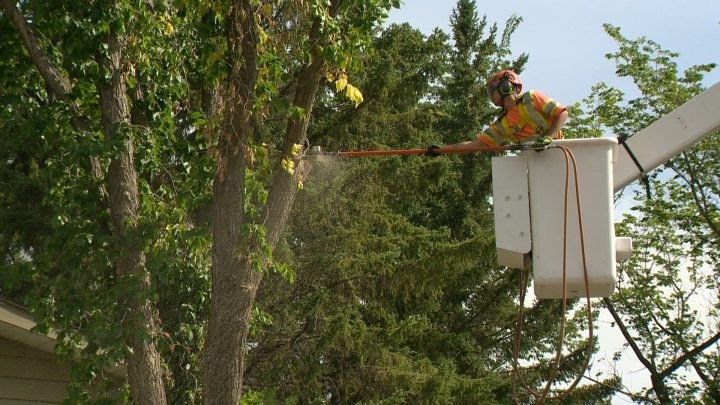There were 31 cases of Dutch elm disease reported throughout the community this year, with the parks department finding the worst cases on South Hill.
All infected trees have been removed and destroyed, although since some trees were growing so close together, multiple trees had to be removed due to the spread of the disease through the root grafts, according to a City of Moose Jaw news release.
The 31 cases this year is nearly double that of last year, when 18 cases were reported, explained parks gardener Sarah Regent. However, since there are about 18,000 elm trees in the community — excluding those in Wakamow Valley and the Wild Animal Park — the numbers affected this year represent less than one per cent of the entire elm tree population.
“We are actively scouting and testing for (Dutch elm disease) and ask residents to call us if signs of (Dutch elm disease) are spotted,” she added.
Symptoms of the disease include leaves on the affected branches wilting, curling up, turning yellow or brown, and drying out; this is called flagging. These symptoms are usually accompanied by brown to black staining in the sapwood, also known as streaking.
Most of the elm trees in Moose Jaw are either the American or Siberian species, Regent said. Most of these species were planted as seedlings 60 to 80 years ago, so they each have different genetics. This means the disease could kill a tree in three weeks or in three years.
The parks and recreation department normally starts monitoring for Dutch elm disease in June, but Regent pointed out staff could start earlier if the weather is good. Staff continue to watch for the disease until September, but stop once the leaves begin to change colour as the season changes.
The municipality reminds residents that there is a pruning ban on elm trees until Saturday, Aug. 31. The pruning ban normally runs from April 1 to Aug. 31 of each year.
Elm bark beetles, which play a critical role in the transmission of Dutch elm disease, are attracted to pruning wounds during the ban period, according to the news release. The beetles are the main carrier of the fungus responsible for the disease and travel from infected trees — where they deposit their eggs — to healthy trees to feed. By flying from tree to tree, these beetles deliver spores of the fungus in an effective manner.
Once the pruning ban is lifted Sept. 1, all elm wood must be disposed of at the city landfill. An elm wood disposal permit can be obtained, free of charge, from the parks and recreation department. The permit allows residents to dispose of any elm wood they may have at the landfill free of charge.
Residents are encouraged to prune any deadwood in the winter, while they should not move firewood into the municipality from outside the community.




